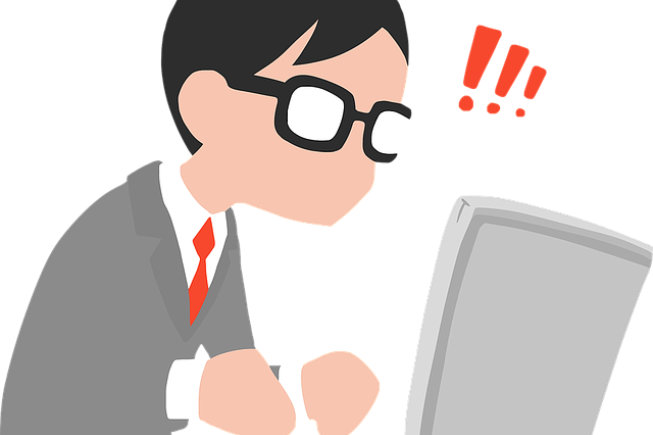
Whether you are using your computer for business or residential purposes, there are various reasons why your computer can slow down over period and this article we highlight 7 top reasons based on our experience.
When you bought your new computer, it started quickly, launched programs quickly and had lot of space for all your business or personal documents. Add to that, your computer looked great and anyone who used your computer, loved the fact that it was snappy. You felt, this computer will last you at least 4-5 years if not more.
As you started using your computer, you realized that it is not as snappy as the day you bought. It started showing age quickly. To make the matters worse, it has only been less than 2 years since you bought it. You can feel that it is not starting as quickly, not loading program as fast and your storage is depleting way quickly than you originally thought. Sound familiar?
Based on our experience, and we are learning even more every day, here are 7 things that you should investigate:
-
Start-up applications: When you install a new program, chances are it will run a small snippet of program all the time on your computer. These snippets will run all the time whether you are using that program at this minute or not. Now multiply these with tons of installed program on your computer and most running a snippet, you have tons of these snippets running in background eating your PC’s performance.
For example, your scanner utility always loads in the background to speed things up when you want to scan – but if you scan once or twice a month, these snippet program can be closed completely. Programs like that are holding onto a portion of your processing power and adding to your speed issues. The average home computer automatically loads around 75 programs at start-up!
-
Temporary junk: When you browse, when you open a program, when you play a game, or even when you provide IT services, you will end up downloading webpage as cache, installable programs in Downloads folder, helper files for your game and IT tools that add up over time. Have you heard about “cookies”? No not that sweet dessert but when you visit a website, many of these sites install cookies that not only use space but also may be used to track you. Go to your computer Settings and search “Delete Temporary Files” and use that tool to clean these mess. The more junk your computer builds up, the slower it gets.
-
Viruses and malware: These are real nuisance as well as dangerous. They can be causing some annoying behavior on your computer or can even be dangerous like encrypt your files. One of the best tricks, we would suggest is invest in a good anti-virus program and follow a basic cyber hygiene. For e.g., do not visit websites when your browser recommends not to, do not open email if you do not recognize the sender and even If you recognize the sender, do not trust the attachment if it says, “I saved $$$$ by following recommendation in this attachment.” If it sounds too good to be true, it may very well be!
While you are at it, remove any old windows installation that Microsoft saves on your computer if you decide NOT to go back to previous feature version of Windows. However, we recommend leaving it for a while until you are sure that latest and greatest update from Microsoft Feature update is not causing unwanted issues on your pristine computer.
Bonus Tip: We recommend our Clients to create 1) a new computer user called, for e.g., “John-Admin” with different password (don’t forget to remember the password) and 2) make them themselves and other people using their computer as “Standard” users. You would wonder, how does that help? If you are browsing a suspicious website and end up downloading a malware, by not browsing as “Administrator”, Windows will ask you to enter your administrator credentials before installing the program. Now if you are making a conscious decision to install the program, by all means enter your Administrator credentials but if the website is tricking you to install, this will stop you in your tracks and help you avoid making a devastating mistake.
-
Bloating: With every new version of software comes a new set of features, introductory sequences, and design improvements. The problem with this is the application becomes larger and larger with each new version, requiring more system resources to install and run – and slowing your computer down.
Cortana: If you do not know what this is, time to disable the service from Settings. If you use Cortana, make sure you index it properly otherwise it can slow things down for you. Cortana is an excellent service but based on our experience, most users do not use them, and it just sits in the memory waiting for your next command that never arrives.
-
Check CPU and Memory usage: If you do not know what this is, follow this. Hit CTRL, SHIFT and ESC keys together. Click on More Details. Under Processes tab, see which program is using most amount of CPU and Memory. You can quickly narrow down which program is causing problem, by clicking CPU column to see CPU usage and Memory column to see memory usage. If you do not recognize the program and it is using excessive CPU or Memory, we would not recommend hitting End Task at the bottom. Instead, time to see an IT professional. But if you know what you are doing, go ahead.
Bonus Tip: Head to Startup tab and see if you can disable some services as well. Again, use an IT professional if you do not know what you are doing.
-
Pause OneDrive Syncing: If you use OneDrive, Microsoft now offers to back up your Documents, Desktop, Pictures etc. It is a great feature but sometimes it causes your computer to slow down because it tries to upload or download changes constantly every time you hit File Save. Pause the syncing by looking for OneDrive icon in your notification area on the bottom right, right click on OneDrive icon, and click Pause Syncing. Do not forget to Resume Syncing when you are done.
-
Adjust appearance of your windows: Windows 10 brings a lot of visually appealing effects to your Windows. While they make your PC visually look attractive, it can also cause performance degradation. Follow these steps to adjust your windows appearance.
- In the search box on the taskbar, type performance, then select Adjust the appearance and performance of Windows in the list of results.
- On the Visual Effects tab, select Adjust for best performance > Apply.
- Restart your PC and see if that speeds up your PC.
Just like cars, computers need regular maintenance. As part of our Managed IT Services, we offer a Tune-Up service to improve your PC performance and possibly even extend its life at no cost to you.
Give us a call at 951-777-2004 for a FREE IT Assessment of your business if you are experience your office computers are not performing at its optimum level.





